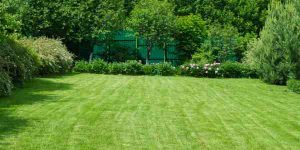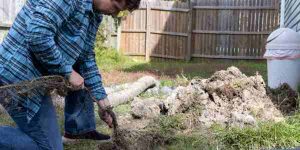How to Keep Your Grass Healthy in Winter

Keeping Your Grass Green and Healthy with Impact Landscapes
As the winter chill sets in, many homeowners wonder how to keep their grass healthy and vibrant during the colder months. While grass may not grow as vigorously in winter, it still requires care and attention to ensure it thrives come spring. At Impact Landscapes, we understand the importance of winter lawn care and offer valuable tips to help you maintain a lush, green lawn even in the coldest of months.
Keep Mowing, but Adjust the Height:
While grass growth slows down in winter, it’s still essential to mow your lawn regularly. However, adjust your mower blade to a higher setting to leave the grass slightly longer. Taller grass blades help insulate the soil and protect the roots from frost damage. Aim to keep your grass around 2-3 inches tall throughout the winter months.
Clear Debris and Leaves:
Fallen leaves, branches, and debris can smother your grass and create ideal conditions for mold and disease to thrive. Regularly clear your lawn of debris to ensure air circulation and prevent moisture buildup. Use a rake or leaf blower to remove leaves and debris promptly, especially after windy weather.
Limit Foot Traffic:
Grass can become brittle and prone to damage during winter, especially when it’s frozen or covered in frost. Minimize foot traffic on your lawn, especially when it’s wet or frosty, to prevent compaction and turf damage. Avoid walking on frozen grass, as it can cause the blades to break and damage the crown of the plant.
Avoid Salt Damage:
During winter, salt and de-icing agents used on sidewalks and driveways can leach into the soil and damage grass roots. Whenever possible, use alternatives to salt, such as sand or kitty litter, to provide traction on icy surfaces. If you must use salt, apply it sparingly and avoid spreading it directly onto your lawn.
Stay Off Frozen Grass:
Walking or driving on frozen grass can cause significant damage to your lawn. Frozen grass blades are more brittle and prone to breakage, which can lead to brown patches and bare spots come spring. Wait until the frost has melted and the ground has thawed before venturing onto your lawn.
Aerate and Overseed:
Fall is the ideal time to aerate and overseed your lawn, but if you missed the window, you can still do so in early winter. Aerating helps alleviate soil compaction and allows air, water, and nutrients to penetrate the root zone more effectively. Overseeding fills in bare patches and ensures thick, healthy grass growth in the spring.
Stay on Top of Lawn Care Chores:
Even in winter, your lawn requires some maintenance to stay healthy. Stay on top of basic lawn care tasks like watering (when temperatures permit), fertilizing, and weed control. A winter fertilizer application, low in nitrogen but high in potassium, helps strengthen grass roots and prepare your lawn for the challenges of winter.
Prepare for Spring:
Winter is also an excellent time to prepare your lawn for the upcoming spring season. Take this opportunity to plan your spring lawn care regimen, including any repairs or renovations your lawn may need. Consider scheduling professional services like aeration, dethatching, and soil testing to ensure your lawn is in top condition when the growing season begins.
In conclusion, while winter lawn care may seem less demanding than in other seasons, it’s still crucial for maintaining a healthy and vibrant lawn year-round. By following these tips from Impact Landscapes, you can help protect your grass from winter damage and ensure it emerges lush and green when spring arrives. With a little care and attention, your lawn will be the envy of the neighborhood come warmer weather.



